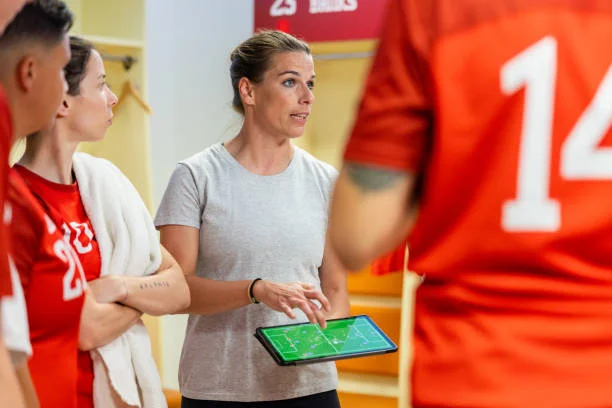Effective ADHD Study Tips
Time Management
Create a daily schedule to allocate specific time slots for studying, breaks, and relaxation. Use timers to stay focused during study sessions and ensure regular short breaks.
Organization Techniques
Utilize colour-coded folders or digital apps to keep study materials organized. Break down tasks into smaller steps to prevent feeling overwhelmed.
Study Environment
Find a quiet and clutter-free space to minimize distractions. Use noise-cancelling headphones if needed to maintain focus.
Study Strategies
Implement the Pomodoro technique: Study for 25 minutes and then take a 5-minute break. Practice active reading by summarizing critical points after each paragraph.
Self-Care Practices
Sleep and exercise are crucial to cognitive function. Incorporate mindfulness exercises to reduce stress and improve concentration.
Teaching Ideas for ADHD Students
Visual Aids
Use visual aids like colour-coded notes and diagrams to help ADHD students organize information better.
Visual aids can assist in enhancing focus and retaining information, making studying more engaging for ADHD students.
Break Tasks Down
Breaking down tasks into smaller, manageable steps can help ADHD students stay on track and feel accomplished.
By dividing assignments into clear sections, students can tackle each part methodically, reducing feelings of overwhelm.
Incorporate Movement
Encouraging movement breaks during study sessions can aid ADHD students in releasing excess energy and improving concentration.
Allowing brief periods for physical activity can boost alertness and help students stay engaged with their work.
Strategies to Help ADHD Learners
Classroom EnvironmentTo help ADHD students stay focused, create a structured and organized classroom setting. Seat them away from windows or doors.
Establish clear routines with visual schedules. Utilize color-coded folders and labels for better organization. Provide a quiet space for tasks requiring concentration.
Instructional Techniques
Use multisensory teaching methods to engage multisensory. Incorporate hands-on activities, visual aids, and interactive technology to enhance learning.
Break down tasks into smaller steps and provide frequent breaks. Encourage active participation through group work and peer collaboration.
Support Systems
Implement a positive reinforcement system with rewards for completed tasks. Offer praise and encouragement to boost self-esteem.
Collaborate with parents and other professionals to create a unified support network. Utilize resources such as special education services and individualized education plans (IEPs).
Create Routines for ADHD Students
Establish Consistent Schedules
Establishing consistent schedules is crucial for ADHD students. Having a set routine helps them stay organized and focused. It’s recommended to create a daily schedule that includes specific times for tasks, breaks, meals, and bedtime.
Establishing routines can improve time management skills, reduce stress levels, and enhance productivity. ADHD students can better manage their time and responsibilities by following a structured schedule.
Break Down Tasks into Manageable Steps
Breaking down tasks into manageable steps is beneficial for ADHD students. This approach helps prevent feeling overwhelmed by large assignments. Encourage students to create to-do lists and prioritize tasks based on deadlines and importance.
By dividing tasks into smaller steps, ADHD students can focus better on each component without feeling anxious about the entire project. This strategy promotes a sense of accomplishment as they complete each step.
Classroom Accommodations for ADHD Learners
Visual Supports
Visual supports such as charts, diagrams, and colorful visuals can help ADHD students better understand and retain information. These tools provide a visual structure to help them stay organized and focused.
Flexible Seating
Flexible seating options like standing desks, stability balls, or bean bags can benefit ADHD learners. This allows them to move around and release excess energy, promoting better focus and engagement in the classroom.
Breaks and Movement
Incorporating frequent breaks and movement opportunities can be beneficial for students with ADHD. Short breaks for stretching or walking can help them recharge and maintain concentration throughout the day.
Positive Reinforcement
Implementing a system of positive reinforcement can motivate ADHD students to stay on task and follow classroom rules. Praising their efforts and achievements can boost their self-esteem and encourage continued progress.
Organization Strategies
Teaching organization strategies like colour-coded folders, checklists, and planners can assist ADHD learners in managing their time and tasks effectively. These tools help them stay on top of assignments and deadlines.
Focus on Positive Reinforcement
Encouraging Behavior
Encouraging positive behaviour in ADHD students can significantly impact their academic performance. Praise and rewards for completing tasks can boost their motivation levels.
ADHD students often struggle with staying focused and organized. Acknowledging their efforts when they manage to concentrate on a task can reinforce desired behaviours.
Setting Achievable Goals
Breaking down tasks into smaller, manageable steps helps ADHD students stay on track. Setting achievable goals allows them to experience success more frequently.
-
Create a task list: Breaking tasks into smaller components can make them less overwhelming.
-
Use visual aids: Visual schedules or charts can help students track their progress and stay organized.
Building Self-Esteem
Boosting self-esteem is crucial for ADHD students. Positive reinforcement can enhance their confidence and belief in their abilities.
-
Celebrate small victories: Acknowledging even minor achievements can significantly impact self-esteem.
-
Provide constructive feedback: Offering feedback in a positive and supportive manner fosters a growth mindset.
Collaborate with Parents for Support
Establish Open Communication
Establish open communication with parents to create a supportive environment for ADHD students. Regularly update them on the student’s progress and challenges.
Encourage parents to share insights about their child’s behaviour at home. This will help us understand how to better support the student. This collaboration fosters a holistic approach to managing ADHD.
Create Consistent Routines
Create consistent routines between school and home to provide stability for ADHD students. Consistency helps reduce anxiety and improve focus.
By aligning schedules, expectations, and strategies, parents and teachers can work together to establish a structured environment that benefits the student’s academic performance.
Utilize Behavioral Strategies
Utilize behavioural strategies that are consistent across home and school settings. Implementing similar approaches ensures continuity in managing ADHD symptoms.
Collaborate with parents to reinforce positive behaviours and address challenges effectively. By working together, both parties can provide consistent support tailored to the student’s needs.
Efficient Study Techniques for ADHD
Break Tasks
Break down your study tasks into smaller, manageable chunks. This approach helps you focus better and avoid overwhelming feelings.
Divide your study material into bite-sized sections. This will allow you to tackle one part at a time, making the overall task less daunting.
Utilize Visual Aids
Visual aids such as colour-coded notes, mind maps, or diagrams can enhance understanding and retention of information.
Create visual representations of key concepts to help recall memory during exams or assignments.
Active Learning
Engage in active learning strategies like teaching the material to someone else or discussing it with a study group.
Participating in interactive study sessions can improve comprehension and information retention significantly.
Overcoming Study Challenges with ADHD
Time Management
ADHD students often struggle with time management, leading to procrastination and unfinished tasks. To combat this, they can benefit from creating schedules with specific time slots for each activity.
Establishing a routine helps prioritize and break tasks into smaller, manageable segments. This approach aids in maintaining focus and completing assignments on time. Using timers or alarms can assist in staying on track and transitioning between tasks efficiently.
Organization Techniques
Effective organization techniques are crucial in aiding ADHD students in their academic journey. Tools like colour-coded folders, planners, or digital apps can help students keep track of assignments and deadlines.
Implementing a clean and clutter-free study space enhances concentration levels and reduces distractions. By organizing study materials systematically, students can quickly locate what they need, promoting a more efficient study environment.
Seeking Support
ADHD students must seek support from teachers, counsellors, or academic advisors. These professionals can provide valuable resources, accommodations, and strategies tailored to individual needs.
Engaging in support groups or therapy sessions also offers a platform for sharing experiences and learning coping mechanisms from peers facing similar challenges. Building a strong support network is instrumental in successfully navigating the academic landscape.
Boost Learning and Productivity Tips
Time Management
Establish a consistent daily routine to help ADHD students stay organized and focused. Use timers or alarms to break tasks into manageable chunks and allow regular breaks.
Maintain a visual schedule outlining tasks and deadlines. Utilize color-coding to prioritize activities based on importance and urgency.
Study Environment
Create a distraction-free study space with minimal clutter. Use noise-cancelling headphones to minimize external disturbances and enhance concentration.
Implement fidget tools like stress balls or textured objects to channel excess energy positively. Experiment with different study locations to find the most conducive environment.
Effective Study Techniques
Employ active learning strategies such as mind mapping or teaching concepts to others. Break down complex information into smaller segments for better comprehension.
Utilize online tools like task management apps or digital calendars to track assignments and deadlines efficiently. Seek support from teachers or counsellors for personalized study strategies.
Use the Pomodoro Technique
Breaks
Taking short breaks while studying can help ADHD students maintain focus and productivity. By implementing the Pomodoro Technique, students can work for 25 minutes and then take a 5-minute break.
The Pomodoro Technique involves breaking study sessions into intervals, typically 25 minutes long, separated by short breaks. This method helps ADHD students manage their time effectively and focus on tasks.
Timer
Setting a timer for each study session can help ADHD students stay organized and on track. Tools like smartphone apps or online timers can make adhering to the Pomodoro Technique easier.
Incorporating the Pomodoro Technique into their study routine can assist ADHD students in overcoming procrastination and improving their concentration. This technique encourages students to work in short, focused bursts, followed by brief rest periods.
Incorporate Various Learning Styles
Visual and Auditory Learning
ADHD students can benefit from incorporating various learning styles to enhance their academic performance. One practical approach is to cater to visual and auditory learners. Visual aids like diagrams, charts, and colour-coded notes can help these students better understand and retain information. Incorporating auditory elements such as listening to recordings or engaging in discussions can reinforce concepts.
Kinesthetic Learning
Another valuable technique for ADHD students is to embrace kinesthetic learning. This involves incorporating hands-on activities, movement, and physical objects into the learning process. For instance, students can engage in role-playing exercises and interactive games or even use manipulatives to grasp complex topics effectively.
Multisensory Approach
Implementing a Multisensory approach can also be helpful for ADHD students. Thimultisensorybines senses like sight, sound, and touch to reinforce learning. By integrating activities that appeal to different senses, such as writing while speaking aloud, using tactile materials, or watching educational videos, students with ADHD can improve their focus, comprehension, and retention of information.
Reduce Distractions in Learning
Organize Workspace
Keep your desk tidy and free from unnecessary items. Use organizers to store supplies neatly.
Maintain a clear workspace by removing distractions such as unnecessary objects or loud noises that can disrupt focus.
Establish Routine
Set a consistent study schedule to help regulate your focus and attention. Create a routine that includes designated study times and breaks.
Implement time management techniques, such as, such as using timers or alarms, to structure study sessions effectively. Break tasks into smaller, manageable chunks.
Utilize Technology Wisely
Leverage technology tools like noise-cancelling headphones or apps designed to block distracting websites during study sessions.
Explore mindfulness and meditation apps to improve focus and reduce anxiety. Use digital calendars or task management apps to organize assignments and deadlines efficiently.
Use the Pomodoro Technique
Time Management
ADHD students can benefit from using the Pomodoro Technique to improve focus and productivity. This technique involves breaking study sessions into intervals, typically 25 minutes long, followed by short breaks.
The Pomodoro Technique helps ADHD students manage their time effectively by providing structured study periods. By setting a timer for each interval, students can concentrate better on tasks without feeling overwhelmed.
Implementing the Pomodoro Technique allows ADHD students to work in short bursts, preventing burnout and increasing overall productivity. Breaking down study sessions into manageable chunks helps maintain focus and reduces procrastination tendencies.
Increased Focus
By utilizing the Pomodoro Technique, ADHD students can enhance their ability to concentrate on tasks for short periods. This method promotes a sense of urgency during study intervals, leading to improved attention and retention of information.
-
Pros:
-
Enhances time management skills
-
Increases productivity and focus
-
Reduces feelings of overwhelm and procrastination
-
-
Cons:
-
It may not work for everyone
-
Requires discipline to stick to the intervals
-
Incorporate Various Learning Styles
Visual and Auditory Learning
ADHD students can benefit from incorporating various learning styles, such as visual and auditory. Visual learners absorb information better through images, diagrams, and videos. On the other hand, auditory learners grasp concepts more effectively through listening and verbal instruction. By combining visual aids with verbal explanations, ADHD students can enhance their understanding of complex topics.
Kinesthetic Learning
Another effective learning style for ADHD students is kinesthetic learning, which involves hands-on activities and movement. This approach allows students to engage with the material physically, helping them retain information better. For instance, incorporating interactive experiments or role-playing exercises can make learning more interactive and engaging for ADHD students.
Utilize MultisensoryTechniques
ADHD students multisensory from mmultisensoryechniques that engage mulmultisensoryimultaneously. This approach involves combining visual, auditory, and tactile elements to reinforce learning. For example, using flashcards with colours, textures, and audio cues can help ADHD students improve their memory retention and comprehension skills.
Reduce Distractions in Learning
Organize Workspace
Create a clutter-free environment with clear desk space and minimal visual distractions. Use organizers for supplies.
Maintain a consistent study area to help the brain associate the space with focus and productivity.
Utilize Time Management Techniques
To prevent feeling overwhelmed, break down tasks into smaller, manageable chunks. Allocate time for each task using timers or apps.
Establish a routine with regular breaks to recharge and maintain focus throughout study sessions.
Implement Technology Tools
Explore apps to block distracting websites or limit screen time on devices during study periods.
Use noise-cancelling headphones or white noise apps to minimize auditory distractions and create a conducive study atmosphere.
Engage Senses and Movement
Utilize MuMultisensoryearning
ADHD students benefit from mumultisensoryearninMultisensory that involves multiple senses. This includes incorporating visuals, auditory elements, and hands-on activities in lessons. Appealing to different senses enhances information retention and engagement.
Encourage Physical Activity
Physical activity plays a crucial role in managing ADHD symptoms. Encouraging movement breaks during study sessions can help students refocus and improve concentration. Simple exercises like stretching or short walks can also significantly improve attention span.
Implement Fidget Tools
Introducing fidget tools, such as stress balls or textured objects, can provide sensory input that helps students with ADHD stay focused. These tools allow for discreet movement, preventing restlessness and promoting better concentration during tasks.
Create Structured Breaks
Structured breaks are essential for ADHD students to recharge and maintain focus. Scheduled breaks can prevent burnout and help students manage their energy levels effectively. Setting timers for study intervals followed by short breaks can optimize productivity.
Motivation Strategies to Combat Procrastination
Break Tasks
Break tasks into smaller, manageable chunks. This approach can prevent feeling overwhelmed and boost productivity.
Splitting assignments or projects into smaller portions helps ADHD students stay focused and motivated.
Set Clear Goals
Establishing clear, specific goals provides a sense of direction and purpose. It helps maintain focus and track progress effectively.
By setting achievable objectives, students with ADHD can experience a sense of accomplishment and motivation upon completing each goal.
Utilize Visual Aids
Visual aids such as timelines, checklists, or mind maps can enhance organization and clarity. They serve as reminders and keep tasks visually accessible.
Creating colourful and engaging visual aids can make tasks more appealing and help maintain consistency in completing them.
Set Achievable Goals for Success
Plan Strategically
Develop a clear plan to break down tasks into smaller, more manageable steps. This approach helps ADHD students stay organized and focused.
Use Visual Aids
Visual aids like calendars, to-do lists, and colour-coded schedules can be powerful tools for ADHD students. These aids provide clarity and structure to their daily routines.
Seek Support
Don’t hesitate to seek support from teachers, counsellors, or peers. Communicating your goals and progress can help you stay on track and accountable.
A support system can provide encouragement and motivation during challenging times.
Celebrate Small Wins
Recognize and celebrate small achievements along the way. This positive reinforcement can boost the confidence and motivation of ADHD students.
Stay Flexible
It’s essential to remain flexible with your goals. Adjustments may be necessary based on progress, setbacks, or changing circumstances.
Try Body Doubling for Focus
Enhancing Concentration
Body doubling is a strategy where a student works alongside another person, mirroring their actions. This technique can help ADHD students improve their focus and productivity.
When struggling to concentrate on a task, ADHD students can benefit from having a body double present. The mere presence of another individual engaged in a similar activity can provide a sense of accountability and structure.
How It Works
-
Sit with a friend or family member while studying or working on assignments.
-
Ensure the other person is also engaged in a quiet, focused task.
-
By observing their diligence, ADHD students may find it easier to stay on track themselves.
Benefits of Body Doubling
-
Provides external motivation and accountability.
-
Creates a structured environment conducive to concentration.
Body doubling can be particularly effective for ADHD students who struggle with self-regulation and time management. This technique offers a powerful way to enhance focus and productivity in academic and daily tasks.
Reward Yourself for Achievements
Set Achievable Goals
Set small, achievable goals to keep yourself motivated and on track. Break down tasks into manageable steps.
Reward yourself with short breaks or a small treat after completing each goal. This positive reinforcement can help boost your focus and productivity.
Create a Reward System
Establish a reward system where you earn points or tokens for accomplishing tasks. These points can be exchanged for something enjoyable or relaxing.
Consider rewarding yourself with activities you love, such as watching a favourite show, walking, or spending time with friends.
Celebrate Milestones
Celebrate milestones and significant achievements in a meaningful way. Reflect on your progress and acknowledge the effort you’ve put in.
Share your successes with others, whether it’s friends, family, or a support group. Their encouragement and recognition can further motivate you to continue excelling.
Managing ADHD Brain Fog While Studying
Break Tasks Down
Break your study tasks into smaller, manageable chunks. This approach helps ADHD students stay focused and avoid feeling overwhelmed.
For example:
-
Break down a significant reading assignment into sections.
-
Use timers to focus on each task for short intervals.
Create a Distraction-Free Environment
To help ADHD students maintain concentration, eliminate distractions in their study area. Find a quiet space with minimal interruptions.
For instance:
-
Turn off notifications on your phone or computer.
-
Use noise-cancelling headphones to block out external sounds.
Utilize Visual Aids
Visual aids, such as colour-coded notes or mind maps, can assist ADHD students in organizing information and enhancing memory retention.
Consider these visual aids:
-
Create flashcards for critical concepts.
-
Use highlighters to emphasize essential details in your notes.
Viewing ADHD as a Minor Hurdle
Embracing Individuality
ADHD students should embrace their unique strengths, such as creativity and hyperfocus, to excel academically. Embracing individuality can boost confidence and motivation.
Establishing Structured Routines
Creating a structured daily routine helps ADHD students stay organized and focused. Setting specific times for study, breaks, and relaxation can enhance productivity.
Utilizing Technology Tools
Leveraging technology tools like task management apps or digital calendars can aid in time management and organization. These tools provide reminders and help prioritize tasks efficiently.
Seeking Academic Support
Seeking academic support from teachers or counsellors allows ADHD students to receive personalized assistance. This support can include extra time on exams or access to note-taking resources.
Engaging in Physical Activity
Regular physical activity has been shown to improve focus and concentration in individuals with ADHD. Engaging in activities like yoga or sports can help manage symptoms effectively.






